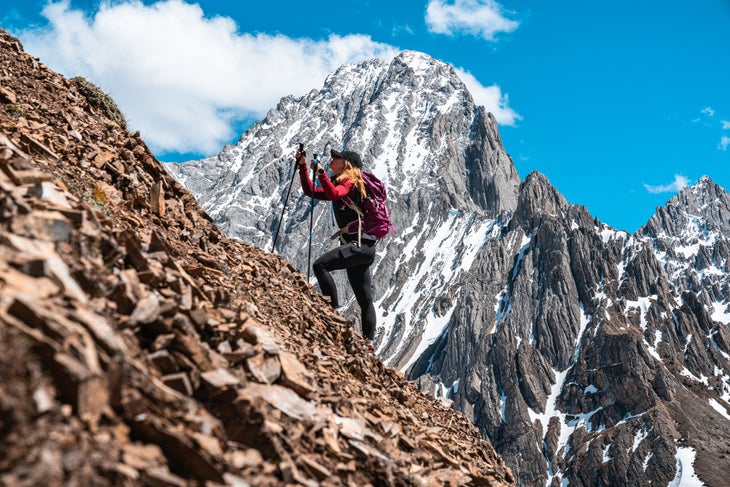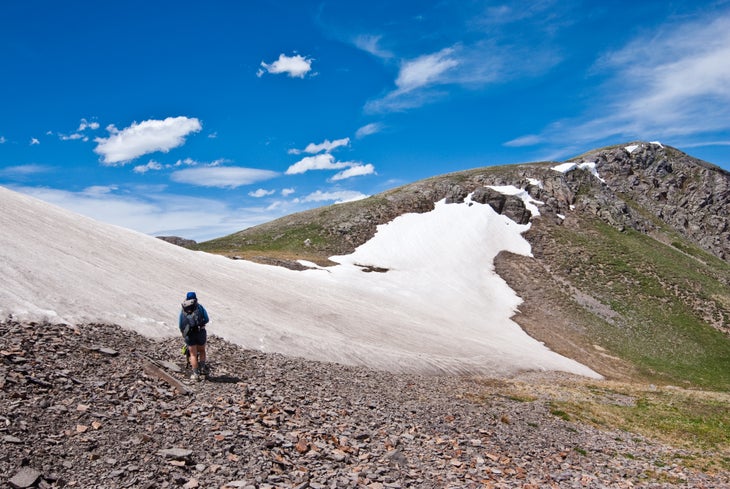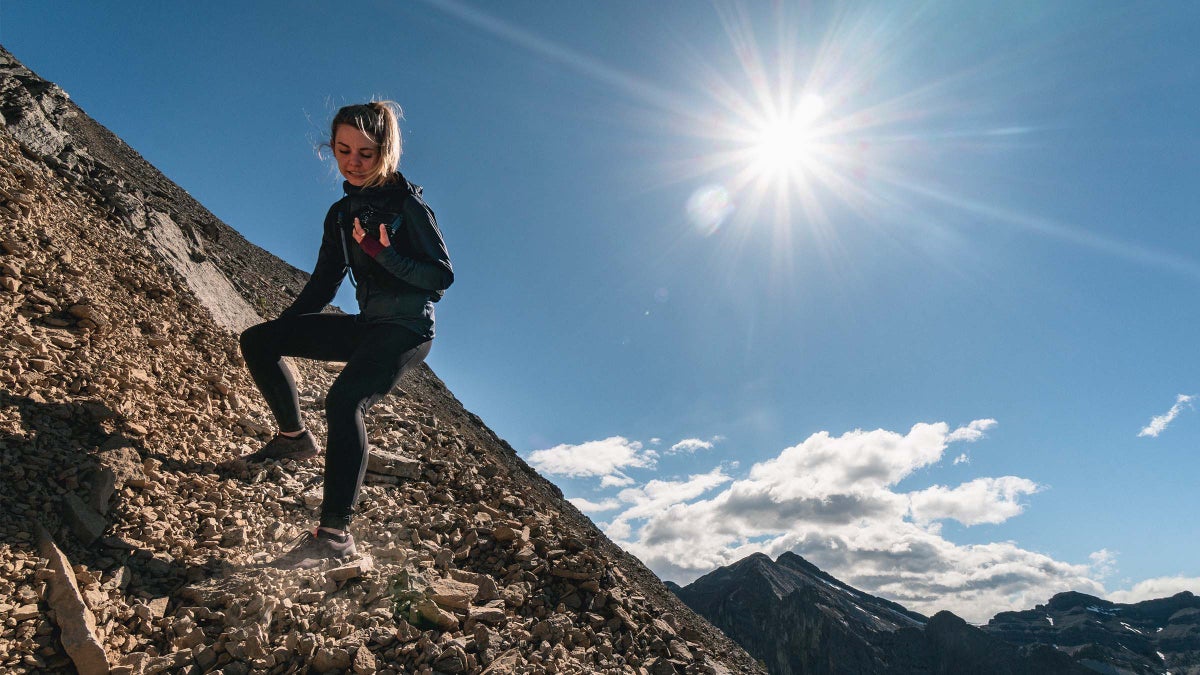Products You May Like
Get access to everything we publish when you
sign up for Outside+.
Imagine this: You’re traversing a gully looking for water when you lose your footing and slip down a steep scree slope. The good news: You’ve stopped sliding. The bad news: You’re banged up and cut. The worst news: You feel like the moment you move, you’re going to start sliding again.
In alpine environments, scree fields and other loose terrain can present hazards to hikers, and a slip could result in serious injury or even death. Learning how to safely navigate this terrain—and get yourself out if you find yourself stuck or having fallen—is a crucial skill for hikers traveling off-trail. Study up, and use extreme caution when entering steep terrain with loose footing.
What is Scree?
Scree refers to the bits of broken rock that accumulate at the base of cliffs or on mountainsides as a result of rockfall. Scree makes for a difficult walking surface, as the unconsolidated pieces often shift under body weight, causing you to slip or, at best, make arduous progress.

Hiking Safely in Scree
If you’re hiking on a trail, chances are the path will be cut into the side of a scree slope, or avoid it all together. Stick to the trail and take your time, and you should be just fine. If you’re hiking off-trail, crossing the scree field might require more caution and patience. First, look around for a safer route. If there’s a way to avoid the scree slope, consider taking it—even if it means walking further. If the slop looks passable, use the following techniques to stay upright:
Keep Moving
In loose terrain, you’re going to slide with every step–don’t fight it. As long as you’re in control, allow your feet to sink into the slope as you make upward progress. When descending, deploy the heel-plunge: Point your toe toward your shin and sink heel-first, as you would descending snow. Keep your nose over your toes to keep from slipping.
Stay Alert
Alter your course as necessary while you ascend, always seeking the path of least resistance. Remain calm and move methodically; stepping intentionally helps you minimize the shifting underfoot, and testing each foothold before committing your full weight helps prevent you from falling. Switchbacking, rather than climbing straight up or down a slope, might be safer and easier on your knees.
Use Trekking Poles
Poles can help you balance. If you’re carrying an ice axe, keep it on your uphill side.
Ramp Up Slowly
If you’re a beginner hiker, think twice before heading into loose, scree-covered terrain. It takes time and practice to feel comfortable and confident moving over loose rock. Practice in low-consequence terrain before attempting to traverse steeper, looser slopes. The more you practice, the more you’ll understand how to move safely and efficiently over different rock types.

Rescue Yourself
Let’s return to the scenario above. Despite moving with caution, you’ve fallen and need to find a way to get yourself off the scree slope and to safety. Now what?
First, catch your breath and assess the situation. Don’t act until your adrenaline rush has subsided. Survey your surroundings to determine the safest route to safety. Look for lichen-covered boulders—these are more likely to be anchored to the slope. Grassy patches of dirt offer good footing, along with larger stones and roots. Avoid areas layered in loose gravel. Remember that the best path to safety might not be above you, but to your side.
Before you move, make sure you’re facing uphill. Kick steps with your toes and test each handhold and foothold. Edge your feet into the hill and maintain at least three points of contact with the ground. If you’re carrying an ice axe, use it to carve steps or as an anchor. As you ascend, balance your weight over your feet; leaning too far into the slope might make your feet slip out from under you. If you’re with others, don’t let partners descend to help you; many climbing injuries result from ill-fated rescue attempts. Instead, they can dangle a rope.
